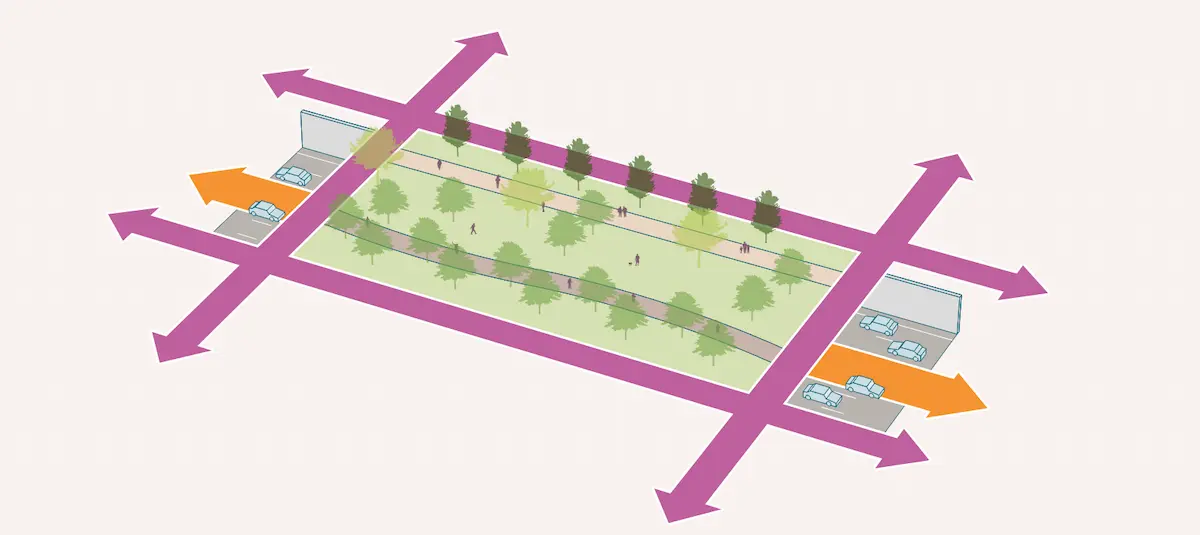
A highway cap, also known as a lid or cover, mitigates part of a depressed highway to a higher degree than just a bridge.
A highway cap is actually a very wide bridge, except that in addition to a street going over the bridge, many other things can be placed on top of the cap, such as parks, plazas, and small buildings. Caps typically range in length from a few hundred feet to a block or more. Caps hide much more of the highway from view than a bridge.
These structures require expensive maintenance and, occasionally, replacement. Highway caps are wider than bridges but shorter than tunnels. Typically, caps do not need special ventilation of exhaust pipe emissions, unlike tunnels. While caps can be an attractive alternative to standard bridges over a depressed highway, they only address the micro problems that the highway causes, not the macro issues. Moreover, highway caps hardwire the highway – making any future removal highly unlikely.
| Community Benefit | Highway-to-Boulevard Conversion | Land Bridge |
| Reconnected Communities | Every neighborhood is connected | Only part of a project corridor is reconnected |
| Climate Action | New clean transportation options will reduce greenhouse gas emissions | The rebuilt highway will continue to produce greenhouse gas emissions |
| Traffic Safety | Universal design features create safe and accessible streets for everyone | The highway continues to cause severe injuries and death |
| Healthier Air Quality | Improved air quality, less health impacts like asthma and cancer, and longer life expectancies | The rebuilt highway continues to produce hazardous air and noise pollution, harming the health of those nearby |
| Cost Effective | Low long-term costs because of reduced payment and bridges | Expensive to build and maintain |
| Economic Justice | Highway land is used for new housing, businesses, jobs and reparative investment along the entire corridor | Opportunities for housing and business space are limited to the lid area |
| Affordable Transportation Access | Zero-fare rapid transit, bikeways and walkable businesses increase access to daily needs | Transportation options are not improved for households who can’t access or afford a car |
| People Served | Serves more people along project corridors | Serves a portion of one neighborhood |
Learn more about Twin Cities Boulevard.
A better future is possible.